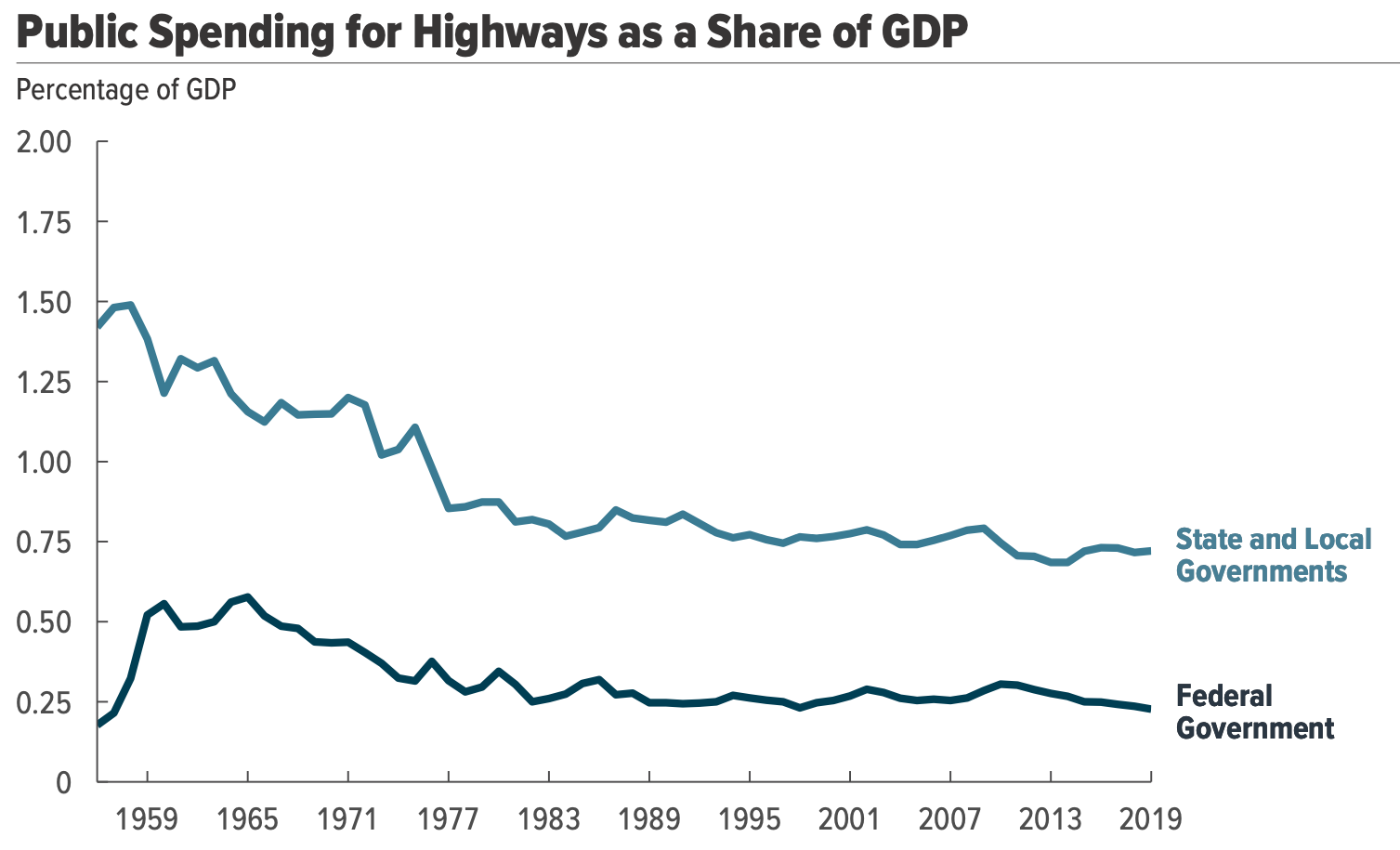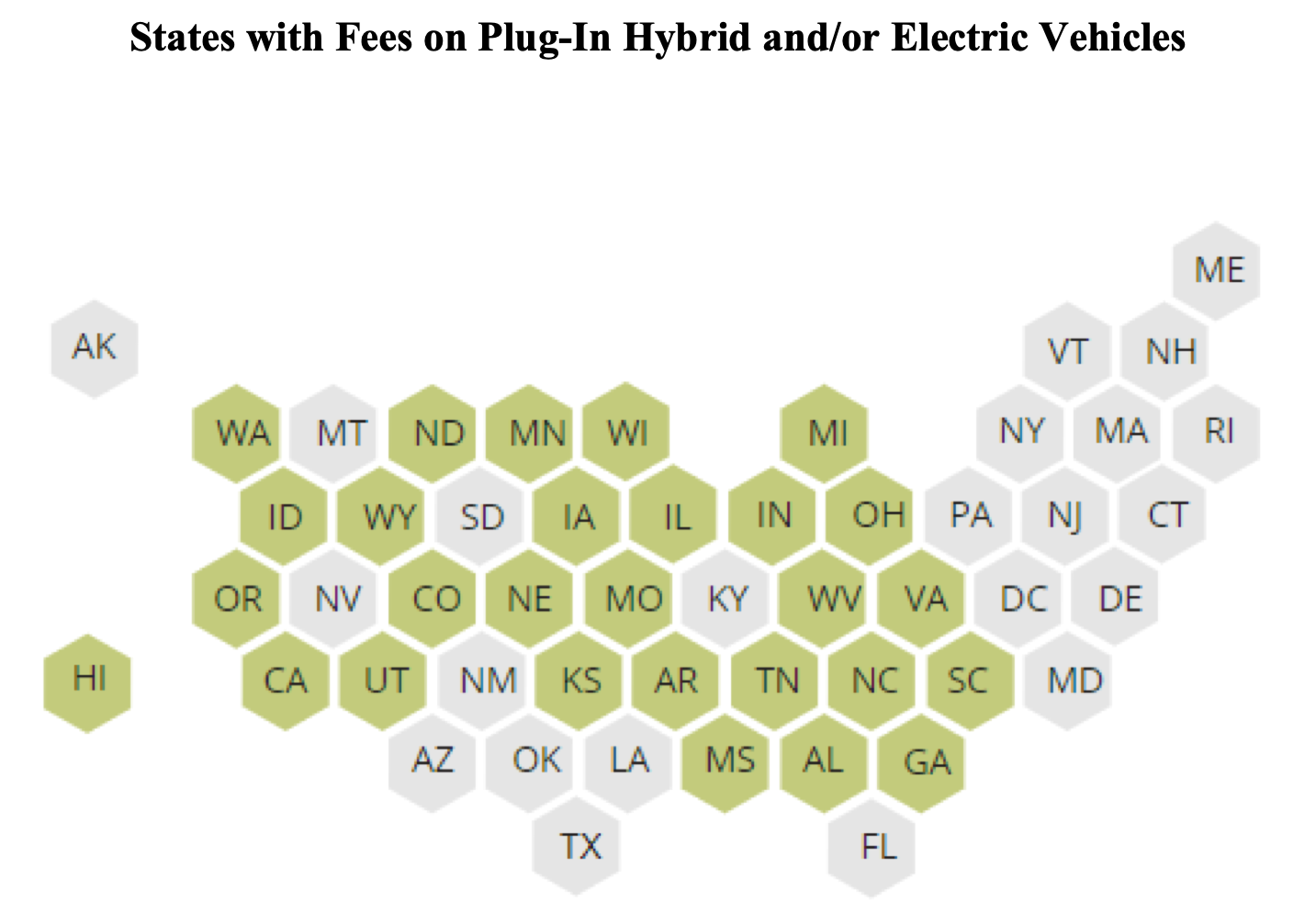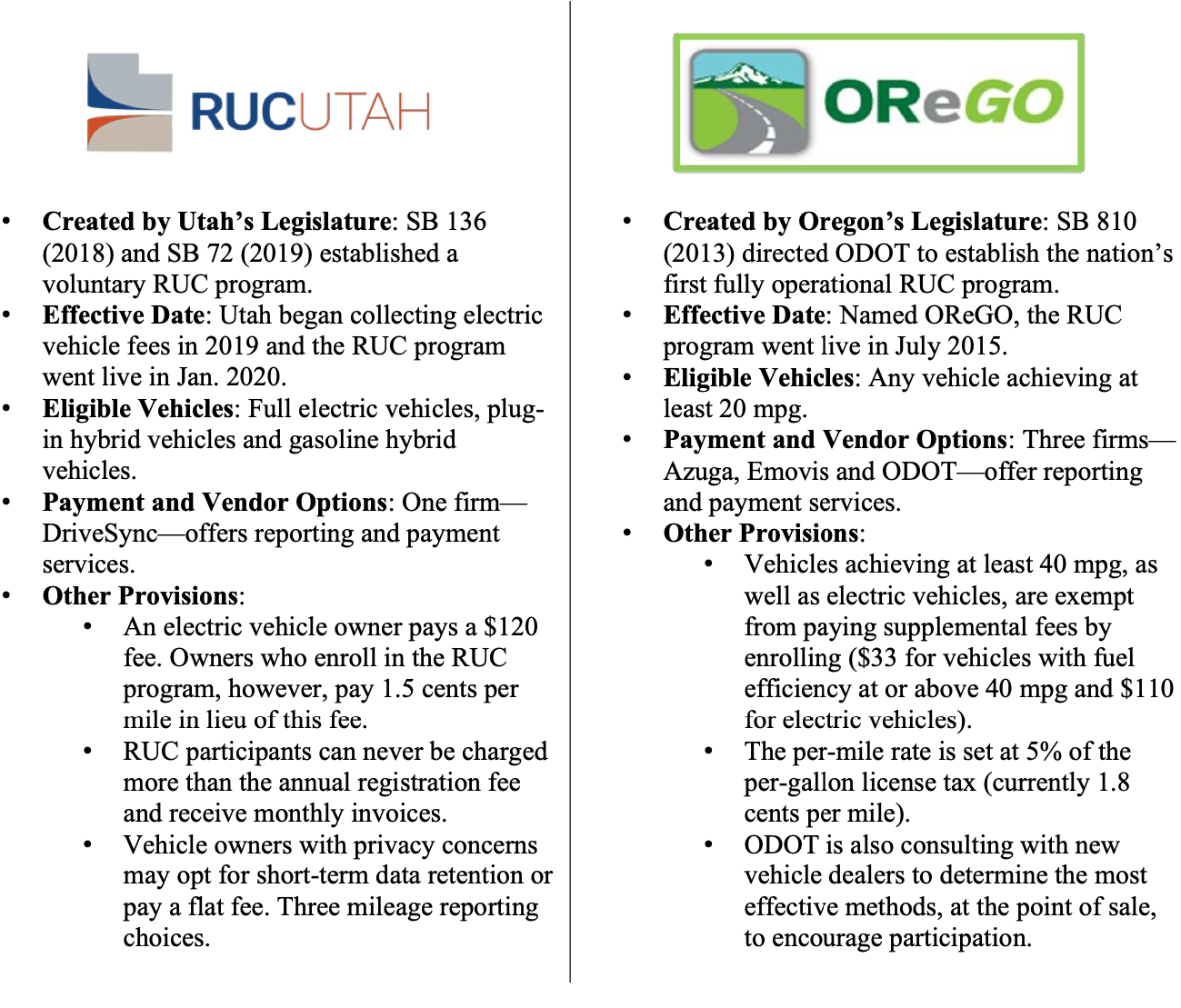A Senate hearing on April 14 wound up focusing on what needs to happen next in order to begin the transition from a system that finances surface transportation by taxing motor fuels to a system that is funded by taxing miles driven.
The hearing before the Environment and Public Works Committee had a much longer title (“Long-term Solvency of the Highway Trust Fund: Lessons Learned from the Surface Transportation System Funding Alternatives Program and Other User-based Revenue Solutions, and How Funding Uncertainty Affects the Highway Programs”), which chairman Tom Carper (D-DE) admitted was the longest hearing title he had ever seen. But most of the discussion revolved around mileage-based user fees (MBUFs), also called road user charges (RUCs).
Witnesses were as follows (clicking on their name takes you to their prepared testimony):
- Joseph Kile, Director of Microeconomic Analysis, Congressional Budget Office.
- Patricia Hendren, Executive Director, Eastern Transportation Coalition (and member of Eno’s Board of Advisors).
- Robert Poole, Director of Transportation Policy, Reason Foundation (and recipient of Eno’s 2018 Thought Leader Award).
- Jack Basso, Chair, Mileage Based User Fee Alliance (and old friend of Eno and of this author).
- Douglas Shinkle, Transportation Program Director, National Conference of State Legislature.
(The CBO and NCSL written testimony is particularly useful as a source of charts and tables.)
As is customary, CBO first set the table, talking about its latest baseline projections for long-term Highway Trust Fund insolvency (covered here in ETW, the bottom line is that baseline spending levels require an additional $75 billion in additional tax receipts or outside transfers over the next five years, and an additional $125 billion for the five years after that). The testimony also summarized data from other CBO reports, like their periodic dataset of all transportation infrastructure funding by all levels of government going back to 1956, which shows that both federal spending on highways has remained fairly constant, as a share of GDP, since the peak Interstate construction spending tailed off in the 1970s:

The testimony also covered issues previously laid out in CBO’s May 2020 report on highway funding and revenue options, and gave an overview of CBO’s October 2019 study on a possible vehicle miles-traveled (VMT) tax on commercial trucks.
Jack Basso focused on mileage fees in his testimony, laying out how both major blue-ribbon panels established in 2005 to examine future Highway Trust Fund solvency wound up recommending a gradual transition to a VMT tax, and the $95 million from the FAST Act that went to various mileage-fee testing pilot programs in 14 different states.Trish Hendren then said that her research showed that any mileage-based fee needs four things for successful implementation: (1) public education; (2) addressing privacy concerns; (3) an understanding of the equity considerations of drivers from different geographies (rural, suburban, urban); and (4) including the trucking sector along with passenger vehicles in the mileage fee system.
Bob Poole first pointed to the 2005 report of a TRB committee on which he served that recommended the eventual transition to a mileage fee as well as the later commission reports cited by Basso. But, acknowledging that implementation of a VMT is far enough away that one would still need a short-term Trust Fund revenue fix, Poole suggested taking the $5 billion per year in fuel taxes currently deposited in the Mass Transit Account and diverting it back to the Highway Account, as well as make the general fund responsible for the current levels of “flex” highway-to-transit money and CMAQ funding for Amtrak currently taken from the Highway Account. (Whatever philosophical merits this approach may have from strengthening the user-pay/user-benefit system, it was tried by Sen. Max Baucus (D-MT) in 2003-2004 and by House T&I chairman John Mica (R-FL) in 2011-2012 but never came close to having the necessary votes in Congress.)
Poole also discussed increasing the Private Activity Bonds cap and expanding the old 1998 Interstate toll pilot program to allow more private equity participation in transportation infrastructure, and he cautioned against forcing the trucking industry to move first to a VMT fee before passenger cars. He also added, “The pilot projects have all stressed one key principle that helps gain customer acceptance: that per-mile charges will replace, rather than supplement, gas taxes. There is a great deal of concern and suspicion that MBUFs will actually be imposed in addition to gas taxes, becoming ‘yet another tax.'”
On behalf of the state legislatures, Douglas Shinkle pointed out that, since 2013, 30 states and the District of Columbia have raised their motor fuel taxes by some amount between 2 and 23 cents per gallon, and 12 states plus D.C. now have tied the future rates to inflation so the tax rate adjusts without subsequent legislative action. In addition, he said that since 2017, 12 states have increased vehicle registration fees (which predate fuel taxes and were the original auto “user fee”) and that 28 states have adopted special extra registration fees for plug-in electric vehicles, the proceeds of which generally go to to the state transportation fund:

Shinkle then pointed out that, in addition to the 14 states that carried out pilot programs for mileage fees using the $95 million in FAST Act grant money, two states (Oregon and Utah) have now enacted permanent mileage-fee options for raising revenue that are already operational. (Virginia’s newly authorized program will go live in 2022.) NCSL’s comparison of those two new programs is below.

Once the question-and-answer period started, per their practice, the CBO witness was unable to recommend which policies Congress should take, which left him out of much of the questioning. The other panelists expressed general agreement that in the long term, some kind of mileage charge as a replacement for fuel taxes is the way to go, and that a nationwide (voluntary) pilot program would be the next step.
New EPW ranking minority member Shelley Moore Capito (R-WV) asked about the rates being set in the pilot programs. Shinkle responded that the state fee (designed to replace the equivalent state motor fuel tax) was 1.5 cents per mile in the Utah program and 1.8 cents per mile in the Oregon program.
To allow readers to do their own math, here are some numbers from the latest FHWA Table VM-1 for four categories of vehicles: light-duty vehicles with a short wheelbase equal or less to 121 inches, light-duty vehicles with a long wheelbase over 121 inches, single unit trucks, and combination trucks (a.k.a. tractor-trailers). These are FHWA estimated 2019 (i.e. pre-COVID) numbers, and ETW has multiplied FHWA’s estimate of fuel consumed per vehicle times the 18.3 cent per gallon gasoline tax for the light duty vehicles and by the diesel rate of 24.3 cent per gallon rate for the heavy trucks. (We recognize that some light vehicles use diesel and some single-unit heavy trucks use gasoline, but we don’t have the data on that.)
| Calendar Year 2019 |
Light-Duty |
Light-Duty |
Single-Unit |
Tractor- |
|
Short WB |
Long WB |
Trucks |
Trailers |
| Vehicles registered |
194,348,815 |
59,465,369 |
10,160,433 |
2,925,210 |
| Avg. miles per vehicle |
11,599 |
11,263 |
12,278 |
59,929 |
| Fuel consumed (thou. gal.) |
93,420,373 |
38,028,860 |
16,656,736 |
28,986,515 |
| Avg. fuel used per vehicle |
481 gal. |
640 gal. |
1,639 gal. |
9,909 gal. |
| Avg.miles per gallon |
24.1 |
17.6 |
7.5 |
6.0 |
| Fed. HTF fuel tax per vehicle |
$87.97 |
$117.03 |
$398.37 |
$2,407.94 |
| Fed. HTF fuel tax in cents/mile |
0.8 |
1.0 |
3.2 |
4.0 |
There was discussion of equity and regressivity from several Senators. Hendren told Ben Cardin (D-MD) that while current fuel taxes are regressive and that rural residents pay more per capita, a mileage-based fee offers more “policy levers” so that the tax/fee rates can be tweaked for different types of road users, based on location, income level, and type of vehicle, which is not possible with a fuel tax that is levied at the refinery.
While Sheldon Whitehouse (D-RI) said he did not want electric vehicles overcharged with a registration or mileage fee that brought in more than their level of road use, Kevin Cramer (R-ND) responded that, while the gas tax is regressive, the people who are early EV adopters appear to be on the wealthy side, so a tax on EVs might be progressive. (Ed. Note: This bit about the incomes of EV owners seems anecdotally true but we would love to see some hard data.) Cramer then tried to get Shinkle to comment on what highway funding formulas and programs need amendment by Congress, but Shinkle refused to get drawn into specifics which would probably divide one state from another.
Newcomer Cynthia Lummis (R-WY) won the “which Senator asked the questions ETW would have asked” award. She pointed out that no one has done an updated study of the public costs incurred by the highway use of various types of vehicles since 1997, and got CBO’s Kile to go on record as saying that an updated cost allocation study would be “incredibly helpful” to policymakers. (He did say that the basic theme from past studies was that the costs incurred by passenger cars were mostly felt through congestion, pollution, noise and other externalities, while the costs incurred by heavy trucks were more from pavement damage.)
Lummis asked Hendren about congestion pricing, and Hendren replied that the technology used for mileage-based pricing could also be used for cordon pricing and variable pricing, and that pilot programs needed to “kick the tires” on that idea. And she asked Poole whether or not there was a valid user-pay model for mass transit. Poole responded by discussing “value capture,” an umbrella term for a number of different means by which transit project sponsors recoup the costs of building a new fixed guideway transit line or station by capturing some of the increase in the value of the surrounding real estate, which Poole noted has been carried out on a large scale in Hong Kong and Tokyo. (Ed. Note: Value capture for transit does have tremendous promise as as a means for local project sponsors to recoup money, but it is unclear how value capture could be used to support federal spending, since the federal government has always been extremely hesitant to get into the field of direct real estate taxation.)
At the end of the hearing, chairman Carper said it was his hope to report from the EPW Committee a fully funded, bipartisan surface transportation reauthorization bill by Memorial Day.
The hearing can be viewed in its entirety here.






